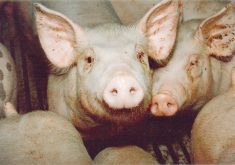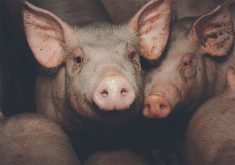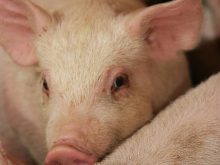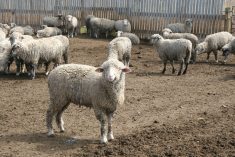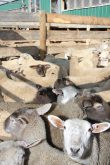Hogs rise
Tight supplies of market-ready hogs pushed cash hog prices sharply higher.
U.S. domestic pork demand is doing well, but exports were down almost nine percent in March.
Packers are losing money on these stronger hog prices and might slow their slaughter lines to restore profitability.
The average live slaughter weight of barrows and gilts in Iowa-Minnesota was 282 pounds two weeks ago, down five lb. from a year ago, said a report from the University of Missouri.
Iowa-southern Minnesota hogs delivered were US$58-59 per hundredweight May 8, up from $52-$53 May 1.
Read Also

Why feds imposed EV tariffs
Moe and Kinew have a fight on their hands when it comes to eliminating the EV tariff. Canada has to worry about pissing off the U.S. and Mexico and hundreds of thousands of auto workers.
U.S. hogs averaged $77.86 on a carcass basis May 8, up from $73.91 May 1.
The U.S. pork cutout rose to $79.57 per cwt. May 8, up from $73.86 May 1.
The estimated U.S. weekly slaughter for the week to May 9 was 2.111 million, down from 2.159 million the previous week.
Slaughter was 2.007 million last year at the same time.
Bison steady
The Canadian Bison Association said Grade A bulls in the desirable weight range sold at prices up to C$5 per pound hot hanging weight. U.S. buyers are offering US$4.10-$4.20 with returns dependent on exchange rates, quality and export costs.
Grade A heifers sold up to C$4.80. U.S. buyers were offering US$3.90.
Animals outside the desirable buyer specifications may be discounted.
Elk report
The elk industry has emerged stronger after the difficult years following chronic wasting disease and BSE with a farmed herd at least 50 percent more suited to and capable of antler and meat production, says the Canadian Cervid Alliance.
Temperament and reproductive performance are also dramatically improved.
An average adult bull once produced about 18 pounds of velvet antler or 360 inches of trophy antler per year. Now those averages are closer to 26 lb. and 400 inches.
The heaviest bulls in the past couple of years produced more than 60 lb. of velvet and scored more than 600 inches, the alliance said.
Limited supply has stimulated buyers to raise prices for antler. Velvet antler from the 2014 harvest season fetched an average of $42 per pound, with select pieces up to $50. Prices for 2015 look similar.
Trophy bulls averaged $4,600 last summer, with the top end at more than $20,000. Most trophy bulls were exported. Demand is steady to strong, the alliance said.
Elk meat was a limited product in the markets before 2002.
In the process of downsizing the herd, large volumes of quality meat were made available to processors, distributors and consumers at attractive prices.
Like a loss leader strategy, this introduced many people to the taste, texture and healthy nature of elk meat.
Prices have crept up, and now demand exceeds supply.
The latest prices offered by Canadian processors are up to $4.20 per pound hot carcass weight delivered to southern Alberta, and U.S. processors are offering $3.80 hot carcass weight picked up at the farm.
Sale averages for 2015:
Semen per straw ranged $300-$850 to average $473.
Bulls born in 2012-13 ranged $2,500-$3,600 to average $3,200.
Females born in 2013-14 ranged $1,200-$4,000 to average $1,993.
Adult bred cows ranged $1,400-$2,900 to average $2,254.
Male calves born 2014 ranged $2,500-$7,000 to average $3,354.
Females born 2014 ranged $1,100-$4,500 to average $2,012.
Private treaty sales for elk females have ranged from $500 to $5,000 in 2014 and 2015 and elk males from $2,000 to $20,000.
Lambs steady
Ontario Stockyards Inc. reported that 1,003 sheep and lambs and 39 goats traded May 4.
All good sheep and lambs sold steady. Goats continue to sell in premium ranges.


